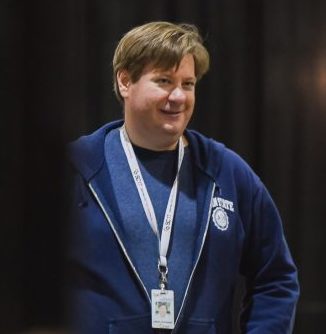In this interview from the SC18 Blog, Jason Zurawski describes what’s in store for the SCinet high performance show network at the SC18 conference.
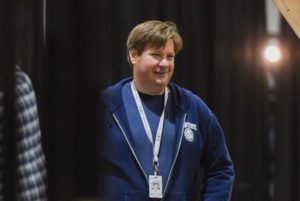
Jason Zurawski is a Science Engagement Engineer at the Energy Sciences Network (ESnet) headquartered and managed by Lawrence Berkeley National Laboratory. ESnet is the U.S. Department of Energy’s high performance networking facility.
Beginning in 2004, while Jason was a computer science graduate student, he has volunteered to plan, build and operate SCinet, the SC Conference’s dedicated high-capacity network. Zurawski served on the SCinet executive team in 2016 and 2017, leading up to his selection as SCinet chair for SC18. SCinet supplies exhibitors with high-capacity feeds to run all their applications in addition to providing high-speed WiFi to 10,000+ attendees. It is a giant task and requires the best in the business to create and manage it.
SC Insider: What’s new for SCinet at SC18?
Jason Zurawski: This is first time SC and SCinet have been back to Dallas in 18 years and, as they say, “giant things happen here.” In November, SCinet will bring the world’s fastest and most powerful network to Dallas for the SC conference. More than 180 volunteers – along with representatives from 31 organizations that contribute hardware, software, and services – will build the network from the ground up.
Plans for the wireless network alone are the biggest in SCinet history: we will install more than 350 wireless access points to provide wireless coverage across more than 1.3 million square feet in the Kay Bailey Hutchison Convention Center Dallas.
SC Insider: What are some of the challenges facing SCinet in Dallas?
Jason Zurawski: The biggest challenge for SCinet this year is getting “last mile fiber” into the Kay Bailey Hutchison Convention Center Dallas. To deliver the high-performance networking capabilities needed for for SC, SCinet is working with a local team to close the gap between the convention center and high-capacity fiber networks in the Dallas metro.
The team includes representatives from the convention center, City of Dallas, VisitDallas, DataBank, Lonestar Education and Research Network (LEARN), and Future Telecom. The plan is to install fiber optic cable between the convention center and a local telecommunications hub that is a block away. Once installed, that cable will offer 96 strands of fiber capacity, which will theoretically provide 1.2 Petabits per second of bandwidth to the convention center.
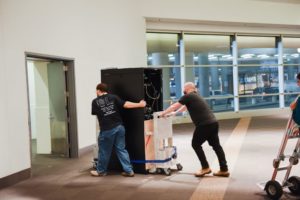
During SC17 in Denver, SCinet volunteers moved 13 fully-populated racks (some weighing more than 1,000 lbs) from the network staging area to the exhibit hall in the Colorado Convention Center.
SC Insider: For someone not very familiar with SCinet, describe the process for planning SCinet. What meetings have taken place so far this year?
Jason Zurawski: Our mantra about the lifespan of SCinet is that it takes a year to plan, a month to build, a week to operate, and a day to tear down. In reality, before one SC conference ends, planning for the next has already started.
SCinet’s big planning meetings occur in March, June, and August. Some of our members also gather in May at a storage facility in Reno to take inventory of SCinet equipment. At this point in the year, we have identified members for all 20 teams within SCinet, and each of those teams has established a project timeline to guide their efforts for the rest of the year.
During SC17 in Denver, SCinet volunteers moved 13 fully-populated racks (some weighing more than 1,000 lbs) from the network staging area to the exhibit hall in the Colorado Convention Center.
We also have begun working with contributing partners to identify the hardware, software, and services that will be showcased as part of SCinet. The 2018 SCinet architecture draft will be the main focus during the summer months. As part of that process, we will engage members of the HPC community to identify networking needs for data-intensive demonstrations and experiments during the conference. And by the close of summer, we will have a stable network architecture design that accounts for those needs.
Our on-site efforts will kick into high gear in October when more than 50 volunteers and an anticipated $60 million in hardware, software, and services arrive in Dallas for staging. SCinet volunteers will unpack, inventory, install, configure, and test the equipment in advance of the conference. Then one week before the conference, the full SCinet team will arrive in Dallas for final preparations, including moving fully-loaded network racks about a half mile from the staging area to the exhibit hall.
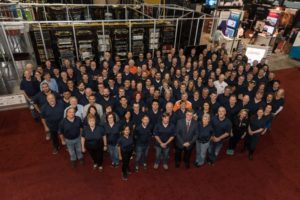
The 2017 SCinet team included women and men from high performance computing institutions in the U.S. and throughout the world.
SC Insider: Who are the volunteers that bring SCinet to life each year?
Jason Zurawski: The 2017 SCinet team included women and men from high performance computing institutions in the U.S. and throughout the world.
SCinet is a truly special collaboration among more than 180 highly skilled volunteers from about 80 domestic and international organizations. All donate their time, energy, and unique skills to the overall success of the conference, with the generous support of their home institutions.
Some are technical professionals that specialize in operation of network equipment, servers, or software development. Others have management-level day jobs and assist in prioritizing and organizing the project. Others still have skills in marketing and communication, and can help tell the story to the general public about the herculean task of building this infrastructure. We welcome anyone who is willing to work hard for the overall success of the conference.
Two programs have been particularly valuable in building and diversifying the SCinet team. Each year, about 20 graduate and undergraduate students join SCinet through the SC student volunteers program. Several of SCinet’s multi-year volunteers, including myself, got their start as student volunteers.
The Women in IT Networking at SC (WINS) program, which is funded by the National Science Foundation and the Department of Energy, has been instrumental in exposing more women to the opportunities in SCinet. WINS is a joint effort between ESnet, the Keystone Initiative for Network Based Education and Research (KINBER), the University Corporation for Atmospheric Research (UCAR), and SCinet, and the program has funded 19 women to participate in SCinet since its inception in 2015. SC18 WINS Participants are currently being selected, and sustainability plans for the program are underway.
SC Insider: What three words would you use to describe the SCinet team?
Jason Zurawski: Dedicated, professional, and tenacious. Dedication is reflected in the team’s goal-oriented focus to deliver the absolute best in technology services for the SC conference. SCinet is a year-long commitment marked by late nights, early mornings, and strong attention to detail, and we see volunteers go above and beyond each year.
They represent the best professionals in the field and come from world-class institutions in academia, industry, non-profit organizations, and government. In the nearly 28 years of SCinet’s existence, there has never been a problem this team could not solve. From flooding to city-wide power outages to broken equipment – even in the most extreme situations – SCinet volunteers are laser focused on success and have the tenacity to get the job done.
SC Insider: What are the main benefits for becoming a SC volunteer?
Jason Zurawski: Volunteering for SCinet is the ultimate professional development experience for learning about advanced technology and cultivating relationships with peers in the field. SCinet provides exposure to a large-scale, challenging project that cannot be replicated within a single institution on a yearly basis.
Many of our volunteers work with their home institutions to develop a long-term plan for participating in SCinet in varying capacities – from contributing and growing specific technical skills to honing their leadership skills in small groups or large cross-functional teams. The relationships volunteers develop via SCinet are long lived and run deep. Many return year after year for this camaraderie and may exercise the relationships they develop to advance the missions of their home institutions.
SC Insider: How would a company get involved if they wanted to support your efforts?
Jason Zurawski: SCinet thrives on the support of volunteers and contributing partners who are eager to be a part of this experience. Companies that want to contribute to SCinet often donate hardware, software, and/or services, and they also donate to our Volunteer Travel Support Fund. For more information about how to become a contributor or volunteer:
• SCinet Contributors
• SCinet Volunteers
• SC Student Volunteers (2018 applications close June 15)
• SCinet Diversity Program: WINS (2018 applications closed March 31)
SC Insider: You have achieved great successes so far in your career. What advice would you give to someone just starting out?
Jason Zurawski: First, if you are doing what you enjoy, you never work a day in your life. In my day job, I use technology to help scientists and researchers advance their overall progress. Ensuring their success gives me a great sense of satisfaction, and in many ways SCinet serves a similar role.
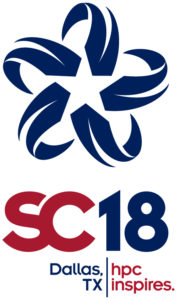 Dedicated and professional volunteers work tirelessly to support a successful conference by providing the biggest and best network infrastructure they can design, build, and operate. We set high goals for SCinet’s capabilities to meet the advanced use cases of SC community members from research labs, industry, education, and government. Our hard work is rewarding because we are a part of something bigger.
Dedicated and professional volunteers work tirelessly to support a successful conference by providing the biggest and best network infrastructure they can design, build, and operate. We set high goals for SCinet’s capabilities to meet the advanced use cases of SC community members from research labs, industry, education, and government. Our hard work is rewarding because we are a part of something bigger.
Second, become well rounded. SCinet offers numerous opportunities to learn and grow as a person. Some volunteers deliberately opt for teams and roles that stretch their existing skills so they can learn something new and advance in ways that may not be possible in their day jobs.
Finally, take time to plan and revisit your trajectory. Everyone should step back and evaluate where they have been from time to time so they can make course corrections. Our chances at well-rounded, fulfilling careers depend on it.
SC18 takes place Nov. 11-16 in Dallas.

